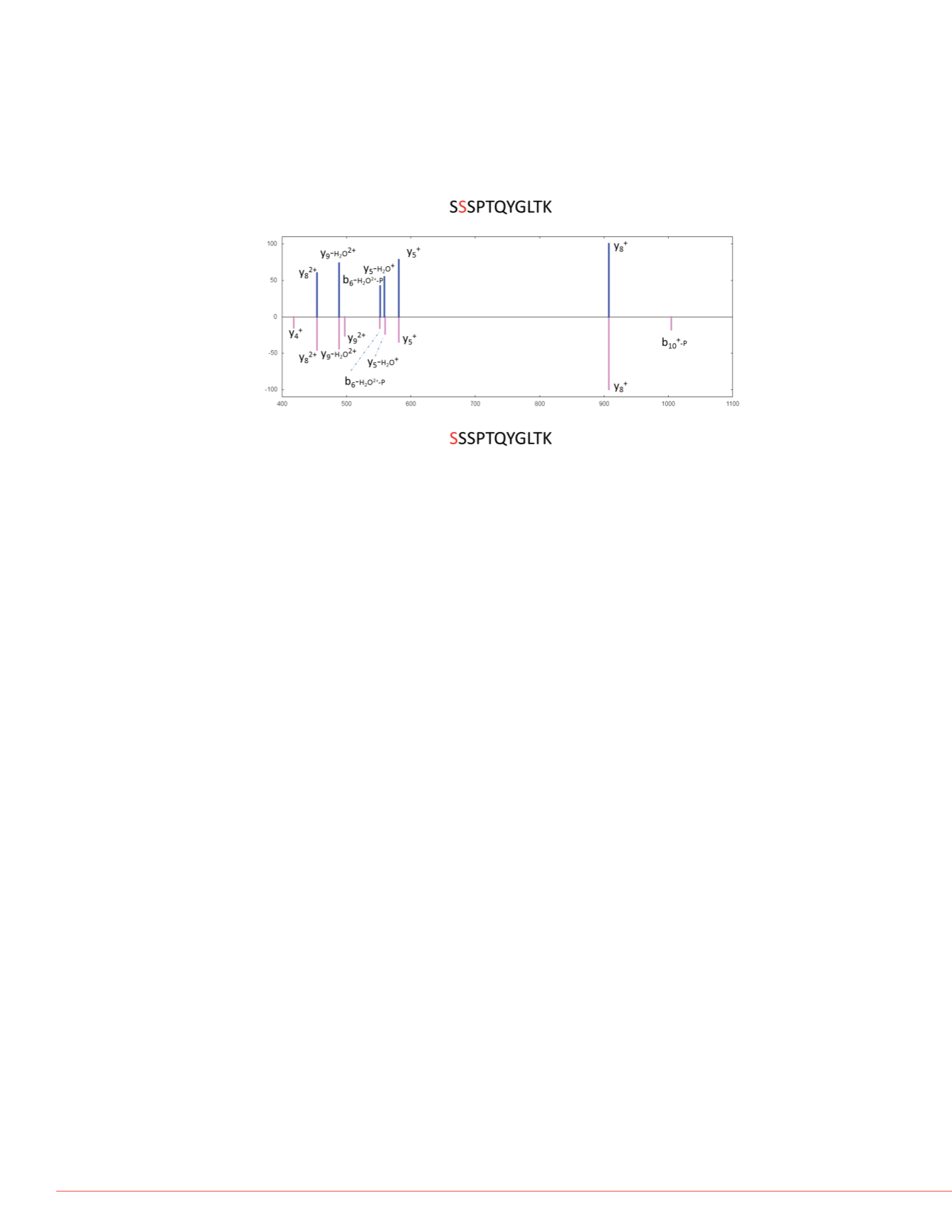

6
A Phospho-Peptide Spectrum Library for Improved Targeted Assays
Conclusion
A spectrum library of synthetic phospho-peptides provides an invaluable starting point
for designing targeted assays, particularly for distinguishing isobaric peptides.
A library spectrum comprised of several observations outperforms a single
observed spectrum by identifying consistent peaks and summarizing variability.
Library spectra are a convenient mechanism for finding and storing diagnostic
differences in fragmentation between isobaric peptides.
Some NCE values will produce more diagnostic peaks than others.
When no diagnostic peaks are observed, the relative intensities of peaks can
distinguish between isoforms.
peptide FGESDTENQNNK
rgies (NCE). Peaks are color-
common to. Blue peaks are
redicted only for this isoform
FIGURE 6. Library spectra for two isoforms of peptide SSPTQYGLTK,
phosphorylation sites in red. Both are consolidated from CID observed spectra,
precursor +2, 19 observations for modification at position 2 (above) and 24
observations for modification at position 1 (below). Very similar fragmentation
was seen for these isobaric peptides. Only the y
10
ion will differ in mass
between them and it is not observed in either. However, three predicted
b- or y-ions are seen in one form and not the other. The relative intensities are
also substantially different.
roduce Diagnostic Peaks
llision energies (NCE) can result in
a did not yield any diagnostic peaks,
one peptide at three different
agmentation pattern. For lower NCE
this isoform. This trend was common
.
fic to one modified isoform are not
als less-easily predicted differences.
elative intensities can distinguish
re observed in both spectra.
All trademarks are the property of Thermo Fisher Scientific and its subsidiaries.
This information is not intended to encourage use of these products in any manners that might infringe the
intellectual property rights of others.



















